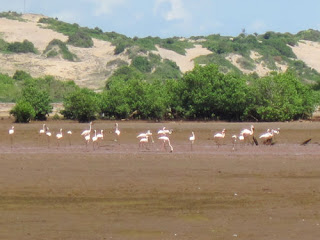

and colonise the areas they used to be in the past, is quite encouraging," he said. But for the mangroves, their ability to bounce back. There are early signs that their efforts are paying off.Ĭrouched in a grove of older trees, Kagema spotted clusters of tiny green shoots bursting out of the dark soil-evidence of natural regeneration, an ecosystem on the mend. They've planted tens of thousands in recent years, reclaiming cleared land and aiding significant forest regrowth, said Francis Kagema, coast regional coordinator from conservation group Nature Kenya.įor local communities, there are economic benefits in rehabilitating nature. Back in the day, we used to have a huge forest with elephants and monkeys," said Francis Nyale, a 68-year-old village elder, standing among a clearing of gnarled mangrove stumps.īut one tree at a time, local villagers are bringing the estuary back to life.įurther down the Sabaki, where its brown waters meet the blue ocean, and swarms of migratory birds flock overhead, a team of volunteers plant mangrove saplings along the riverbank. Locals overfished the river, using mosquito nets that trapped even the smallest of sea life.įertile soils were uprooted and washed downstream into the Indian Ocean, further reducing fish in the Sabaki and killing coral reefs offshore. Local women from a community group plant mangrove seedlings on the banks of the mighty Sabaki River. Mangrove wood-harvested sustainably for centuries to build traditional Swahili homes-was chopped down to feed construction in fast-growing coastal towns like nearby Malindi, a popular tourism hub. Sustainably nurtured, the coastal wetland is also a resilient ally in the face of a changing climate-storing carbon, filtering water pollution, and protecting against extreme weather and rising sea levels.īut years of unchecked exploitation inflicted terrible damage on the mangroves, mudflats, freshwater pools and sandy dunes at the mouth of Kenya's second-longest river.

The surviving tree is a sombre reminder for local communities working to restore this critical ecosystem to health, and make amends for the plunder of the past.įor generations villagers living near the Sabaki estuary had relied on its natural bounty for lumber and firewood, fresh water, seafood, farming land, and plants for traditional medicine. There are no more left," said the 42-year-old Kenyan, who grew up on the estuary and possesses a seemingly encyclopedic knowledge of its flora and fauna. Rapid settling of flocculated sediments, leading to the formation of an ETM."This is the last one. Horizontal and vertical gradient in eddy diffusivity in the central region of the estuary, tended to The relatively low current shear and tidal energy dissipation, combined with high Resuspension of bottom mud and subsequent tidally This separation was attributed to the time lag in the tidally Zone located below the freshwater-saltwater interface, causing formation of an ETM zone, the ETM was

While gravitational circulation tended to cause accumulation of mud in a null The ETM was also located upĮstuary during periods when river runoff was around the The SPM concentrations in the ETM zone varied significantly depending on the river sedimentĭiurnal tide, but were on average 50% greater than the river SPMĬoncentrations. When the river runoff was near the long-term average (63 m3s-1) and also when it was relatively low (35m3s-1). The ETM was generated at HW during periods The estuary is completely flushed after every tidal cycle and experiences high salinityĪnd SPM concentrations gradients at high water

The estuary is one of the most turbid estuaries along the coast of East Africa, characterized by high sediment input and high suspended matter (SPM)Ĭoncentrations. Studied during a period of moderate river discharge. The spatial temporal variability and the behavio r of the Estuarine Turbidity Maximum (ETM) zone in theįlushed Sabaki estuary located in the northern region of the Kenya coast, were


 0 kommentar(er)
0 kommentar(er)
